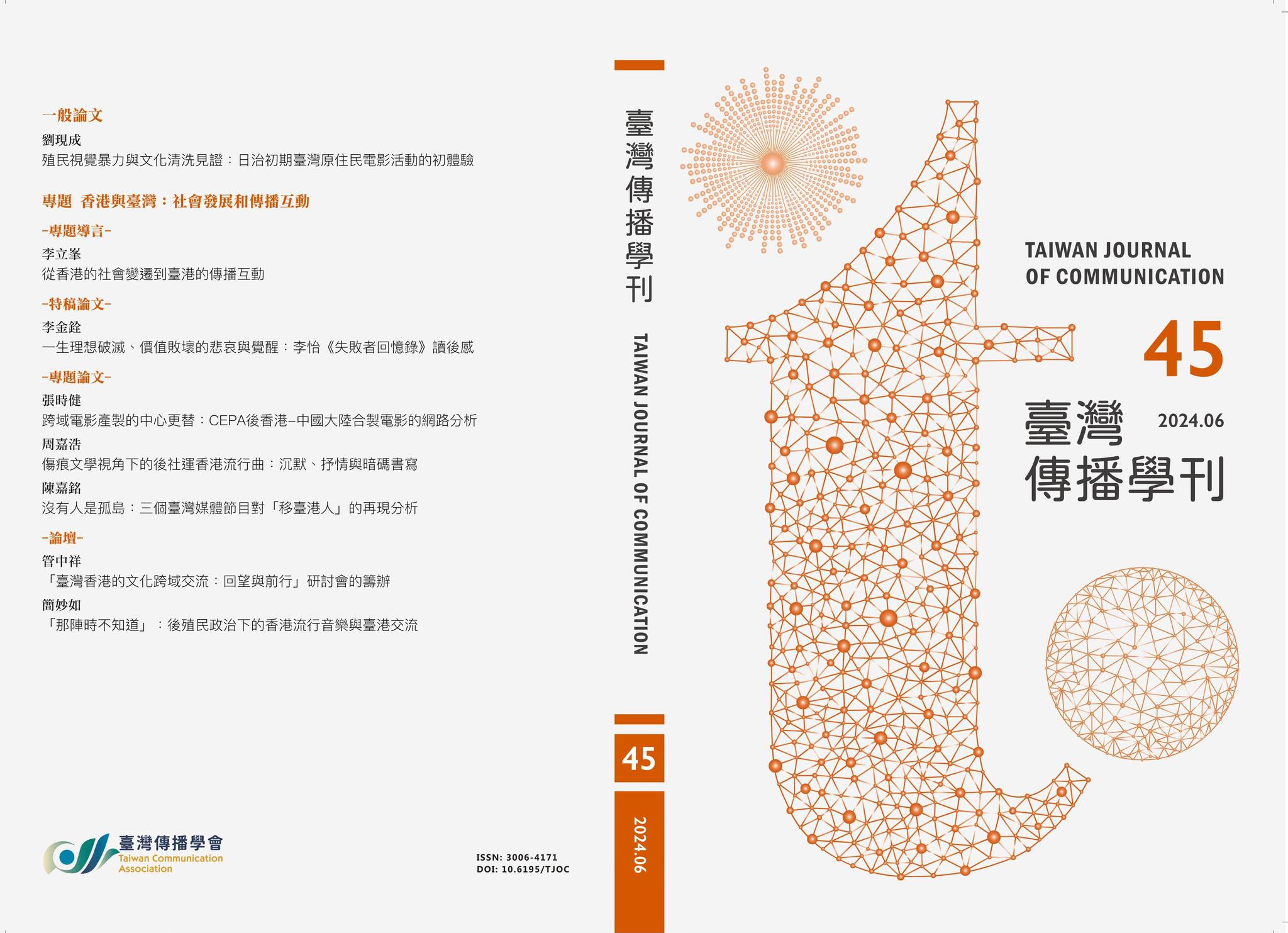 閱覽人數: 1795
閱覽人數: 1795
June
2024
No. 45
香港與臺灣:社會發展和傳播互動
Between Hong Kong and Taiwan: Social Development and Media Interactions頁數:1 - 28
作者(中)
劉現成
作者(英)
Hsien-Cheng Liu
關鍵詞(中)
文化清洗、原住民電影、電影史學、電影吸引力、認知後勤
關鍵詞(英)
Cultural Genocide, Indigenous Cinema, Film Historiography, Cinema of Attraction, Logistics of Perception
中文摘要
過去討論日治初期臺灣電影史,鮮少論及原住民的電影經驗。本研究從電影吸引力、電影戰爭認知後勤的角色及文化清洗的觀點,運用史學方法,重探日治初期臺灣原住民的電影經驗。分從一是觀光體驗電影驚奇,影像夾帶文明化與武器奇觀,電影成為清洗原住民文化工具;二是隨軍參與鎮壓的電影攝影機,見證了殖民者的暴力,更是帝國擴張種族鎮壓的武器。最後,原住民電影經驗體現出對南部鄒族施以綏撫措施,對北部泰雅族則施以征伐手段。
英文摘要
In colonial times, cinema is a vital tool to promote government orthodoxy and to preserve the civilization of the governed. The present study considered cinema’s attractive qualities and the logistics of perception in the process of documenting and perpetuating the cultural genocide of indigenous peoples through film. This study used a historiographical method to generalize historical materials and the cinema viewing experiences of indigenous peoples in Taiwan in the early Japanese colonial period. Furthermore, this study focused on two historical dimensions. The first dimension considers film viewing as a virtual tourism activity driven by the colonizers; films became the tools of the colonists’ cultural expansion. The other dimension concerns images of military suppression of indigenous peoples; army cameras entered the territory of indigenous peoples like a weapon, recording brutal battles and witnessing the colonists’ violence. Finally, the indigenous film experiences reflected the colonizers’ policy of appeasement of the Tsou people in the south of Taiwan and subjugation of the Atayal people in the north.